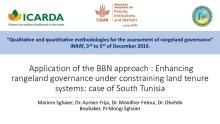Land Library
Welcome to the Land Portal Library. Explore our vast collection of open-access resources (over 74,000) including reports, journal articles, research papers, peer-reviewed publications, legal documents, videos and much more.
/ library resources
Showing items 1 through 9 of 654.This Impact Study examines how tenure security translates into increased investments, productivity, and incomes.
This summary provides an overvew of LIFTs impact study on how tenure security translates into increased investments, productivity, and incomes. It presents evidence on the impact of secondary level land certification (SLLC) on rural farmers in Ethiopia.
This study assesses the impact of the Satellite Woreda Approach on rural land administration performance of 28 woredas and critical success factors to institutionalise the approach.This resource was published in the frame of the Land Investment for Transformation (LIFT) Programme.
This survey report is the third in its series and provides findings from a panel of beneficiary households towards the end of the programme to measure the sustained impacts of LIFTs rural land rental market and access to finance interventions.This resource was published in the frame of the Land I
The local cost-effective, raised-bed machine for small-scale farmers has been developed by ICARDA and its national partners to promote the adoption of raised-bed technology at a larger scale.
This survey examines the impact of second level land certification (SLLC) on tenure security;disputes;land rental;credit markets and changes in investment..This resource was published in the frame of the Land Investment for Transformation (LIFT) Programme.
The presentation discusses the application of the Bayesian Belief Network (BBN) approach to enhance rangeland governance under constraining land tenure systems in the South of Tunisia.
This Template is designed for standardized description of Sustainable Livestock Management Options by Context (SLiM OxC), in which sustainable livestock management option and its social, economic and ecological contexts are systematically characterized.
With only 7 percent of agricultural land, Tajikistan is a mountainous country located at the heart of Central Asian region, prone to desertification, salinization, soil erosion and forest loss.



